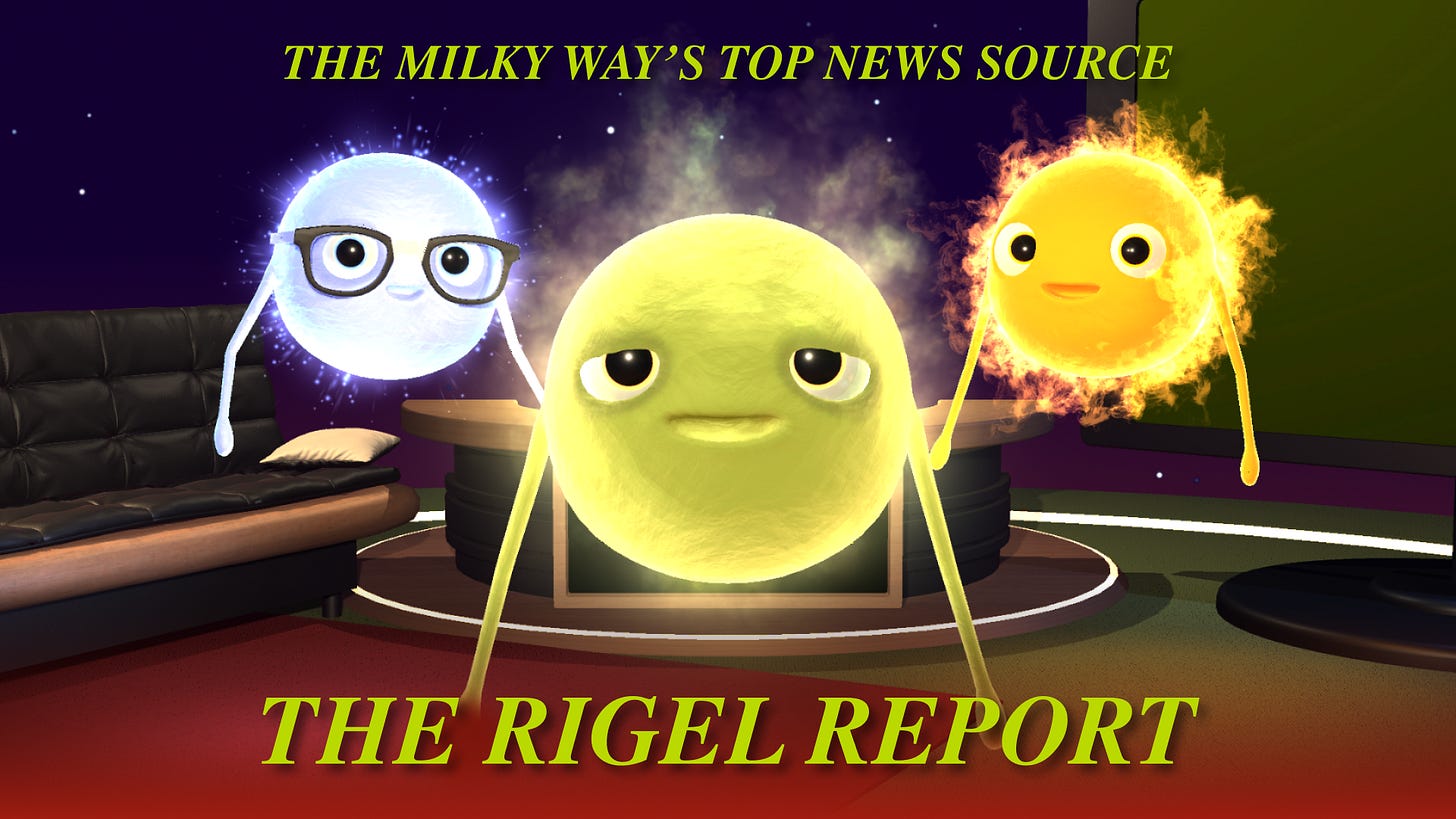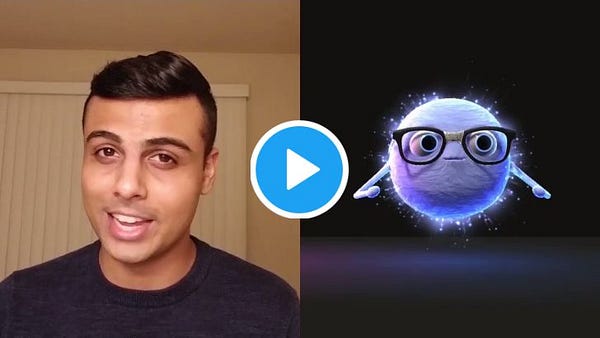TL;DR - We built a new production pipeline to make an animated series in weeks instead of months. We set out to solve our own problem, and used the pipeline to make a show called The Rigel Report. Watch all six episodes of the show here!
When I graduated, I was afraid I wouldn’t get to make another short film. It sounds trivial, but putting a film together is a demanding process; even for a minute-long short, it can take several months to plan, write, and animate something that’s worth releasing. As a student, it was easy to find people who were excited to dive into multi-month projects with me. But when I started working full-time, I was worried that making more movies would be too draining— for my peers and for myself.
Since then, I’ve been trying to find creative ways to continue doing what I love without burning out or spending multiple years on a single project. If I could find ways to accelerate the production process, maybe making another short wouldn’t be so daunting. For months, I chipped away at the idea. I explored the limits of live animation, talked to industry experts, and experimented with different techniques. After nearly a year, I started to assemble a new kind of production tool. One that would make the animation process faster and more collaborative.
Around the same time, I started chatting with Coby Palivathukal, an MFA in USC’s Animation program. Coby was one of the few students at USC who used game engines, motion capture, and augmented reality tools for his own films; he understood the benefits of real-time production, so we started talking about making something together. We pulled in Brenda Chen and Yimin Zhang, brainstormed different ideas, and finally landed on a concept we wanted to explore. Originally, we thought we’d make a short that would last a few minutes. Instead, we decided to aim higher and make an animated series.
The Rigel Report
Every week for the past six weeks, we rolled out an episode of The Rigel Report: an animated talk show hosted by stars (celestial bodies, not celebrities).
Animated shows aren’t made this way today. If a full episode is produced in less than a week, it usually means that someone is being overworked. Writers are forced to compromise, animators lose sleep, and the episode is pushed out at the very last second. It’s a grueling process, and it’s worse when the show doesn’t do well.
Our production was the exact opposite. Our core team was lean, we spent two days per episode, and none of us were forced to crunch. Above all, we had a lot of fun putting the show together. Here’s how we made it happen.
Pre-production
The Rigel Report is powered by an app called Showboat. In the app, actors can control characters, DPs can control virtual cameras, and other crew members can direct in real-time. It’s like a digital film set populated by characters and environments we made from scratch. Here’s a quick look at some features in the app.
Before we started production, we used Showboat to run virtual rehearsals. After each session, we would make improvements to the art and technology to make sure that our show looked and worked the way we wanted it to. Making our show this way meant that we could front-load our effort; once we had assets we were happy with, we could use them for every episode. So, as soon as Brenda finalized our characters and sets, we started shooting The Rigel Report.
Production
On Sundays, we would spend an hour recording footage for the following week’s episode. We would workshop jokes, actors would improvise, and our camera operator would record as much as possible. By the end of each shoot, we would have at least thirty minutes of footage to work with.
Post-production
The next day, we would cut our footage down to a five-minute episode. Based on the topic, we would prepare 2D graphics, thumbnails, and any additional assets before rendering the finished product on the same day.
Two days per episode, start to finish.
Making The Rigel Report introduced us to a new kind of production pipeline. One that made making an animated series more collaborative, more enjoyable, and more efficient. Making the show also put my post-grad worries to rest. Even though everyone on the team was either working or taking classes full-time, we were able to make an entire series in weeks instead of months.
This approach to animation hasn’t caught on yet, but it’s inevitable. It’s hard to imagine a future where animation crews continue to crunch and spend time laboring over work that doesn’t pay off. Though the pipeline is far from perfect, it hints at a future where animated shows are much easier to produce.
When people see technology like this, they start to wonder if it’s designed to steal jobs from artists. They wonder if animators who spend time polishing a character’s movement or perfecting their sets should be worried. I think that’s the wrong way to think about this, so let’s be clear: real-time tools will never replace animators. They’re the ones who add the artistry that makes a story feel complete— without animators, movies would lack the finesse that makes them believable, appealing, and immersive. Instead, these tools are designed to accelerate the most tedious aspects of production, so crews can focus on perfecting their stories and giving animators something worth finessing.
It’s possible that movies and shows in the future will still take several years to make. Real-time technology is nascent, and the industry is slow to adopt new ways of working. The hope, however, is that the majority of those years will be spent developing timeless stories instead of wrangling with old methods of production.
Thanks for reading. Watch all six episodes of The Rigel Report here!
If you have any feedback or suggestions for me, DM me on Twitter or via sagarramesh.com.






Great thoughts Sagar - one thing I might add is that more procedural character design or environment building tools will help animators amplify their reach further, and spend less time on the technical craft and more on story. To your point about films taking years to produce, I still think there's opportunity in those areas to help accelerate those pipeline constraints.
You definitely bring up a theme many of my friends have shared - film production is still physically grueling work, yet there's increased demand to enter this work as more and more people want to be creators.